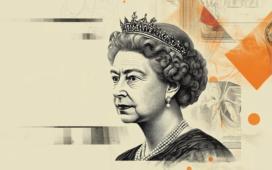The investment world loves to put stocks and bonds into nice, simple “boxes”. Sometimes, though, the labels are misleading, and so it is with frontier markets. The idea seems simple. These exotic investment destination countries represent the “frontier” and even have their benchmark indices, such as the MSCI Frontier Markets index. Dig a little deeper, though, and what constitutes frontiers seems haphazard. In order to make it into the emerging-markets index, a stock market needs to be “reasonably” liquid, open and somewhat transparent.
If it doesn’t tick all those boxes, it could be relegated from the emerging-markets sector to the frontier one, even though some of the countries in the latter box seem misplaced. Take Vietnam, for instance. I was travelling there only last month, and I can’t see that many differences between Vietnam, the Philippines, Malaysia and Indonesia, yet the last three of these proudly Asian and capitalist countries are officially designated emerging markets and Vietnam isn’t.
The difference between emerging and frontier markets
The reality is that frontier markets represent a ragbag of countries that don’t quite fit the definition of emerging markets. That highlights one essential feature of frontier markets: they demonstrate country-specific returns rather than being influenced to a large extent by global factors. Frontier markets therefore typically exhibit a lower correlation with worldwide markets, while the link back to the rival global economic hegemon, China, is also much more blurred.
Sign up to Money Morning
Don’t miss the latest investment and personal finances news, market analysis, plus money-saving tips with our free twice-daily newsletter
Don’t miss the latest investment and personal finances news, market analysis, plus money-saving tips with our free twice-daily newsletter
Frontier markets also boast some other valuable characteristics, namely favourable demographics (they comprise three billion people) and surprisingly robust fiscal governance with low levels of debt. Furthermore, many are under-researched and under-owned. How many people do you know who invest in Romania (a frontier country, but frankly not that different from Poland, an emerging market), or Kazakhstan?
None of this is to say that frontier markets are uninvestable. You can invest via an index from MSCI or S&P. The widely used MSCI benchmark carefully analyses whether a market has adequate turnover, a sufficient number of listings and whether it has attracted some interest from foreign investors. The index comprises 28 countries and 216 individual companies (with an average market value of just $570 million). Vietnam is the biggest country, with 25% of the index, followed by Romania (at 12%), Morocco (also near 12%), and Kazakhstan. Oddly, Iceland is also a top-five holding.
Performance has been adequate, although pedestrian. Since 2011, the Frontiers index has lagged the broad global MSCI ACWI (All Country World index, which contains both developed and emerging markets) in ten of the 13 years and only outperformed in three years (through to 2024). Annualised returns over the last decade are a meagre 2.6% compared with 6.5% for the MSCI global ACWI and 3.64% for the MSCI EM index.
Still, the stocks and countries in the index, and accompanying funds, are cheap, trading at a price/ earnings (p/e) ratio of just 10.5 compared with nearly 22 times earnings for the ACWI. Moreover, by and large, frontier markets (probably because they are less correlated with, say, emerging markets, especially China) are less volatile than many of their global counterparts, although there is much more turnover in the index.
The frontier index is dominated by financials. Banks (big Kazakh and Romanian ones) comprise nearly 40% of the index, followed by energy stocks at 10%. IT barely gets a look-in (at under 1%). There’s a paucity of funds (and London-listed stocks) offering exposure to frontiers, although the quality of what is available is surprisingly high. A single exchange-traded fund (ETF) from Xtrackers invests in all the stocks, the S&P Select Frontier Swap (LSE: XSFR), but because many markets can be tricky to invest in, it uses swaps to get pure exposure. The total expense ratio (TER) on the fund is also a tad higher than at most EM trackers: 0.95%.
The most popular way to build exposure to frontier markets, however, is through the BlackRock Frontiers Investment Trust (LSE: BRFI), with a market value of £300 million. This company trades at an 8% discount to net asset value (NAV) and offers a yield of just under 5%. Based on a strategy co-managed by Sam Vecht, Emily Fletcher, and Sudaif Niaz, it has produced impressive returns over recent years.
Over the last five years (through to November 2024), the fund made a total return of 45%; since launch, it has achieved 150% (well above any benchmark). However, it invests not only in frontier countries such as Vietnam, Saudi Arabia and UAE but also in smaller emerging markets, such as Indonesia and Poland. Its main rule is to ignore the eight largest emerging markets.
Moreover, it adopts a bottom-up, stock-specific approach, which means top holdings include stocks such as US-listed IT business Epam Systems, which has large East European interests and owns Sea, a Singapore consumer internet company. Its managers are optimistic about prospects for frontier markets and note that with “inflation falling across many countries within our [sector], rate cuts have started to materialise in some countries. This is a good set-up for domestically oriented economies to see a cyclical pick up”.
Moving further along the frontier, London also has a handful of Georgian stocks, namely private-equity firm Georgia Capital (LSE: CGEO), a trust with a major stake in Bank of Georgia (LSE: BGEO). Both London-listed stocks have had a good run in recent years as Georgia modernises and looks to the West. Still, both have seen that positive momentum stumble owing to recent political turbulence. That said, Georgia Capital trades at a chunky 52% discount to NAV, despite an impressive recent trading performance.
This article was first published in MoneyWeek’s magazine. Enjoy exclusive early access to news, opinion and analysis from our team of financial experts with a MoneyWeek subscription.




